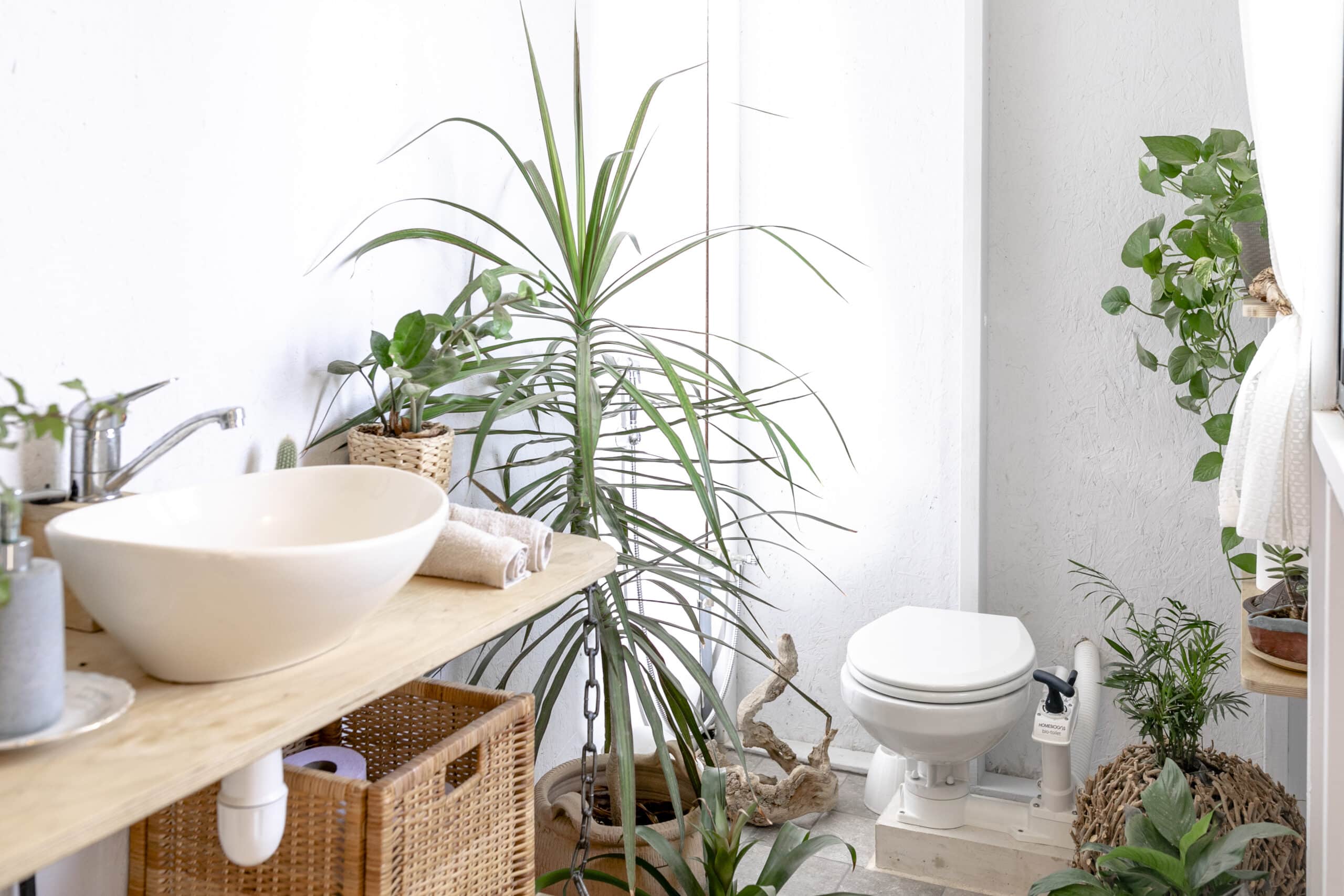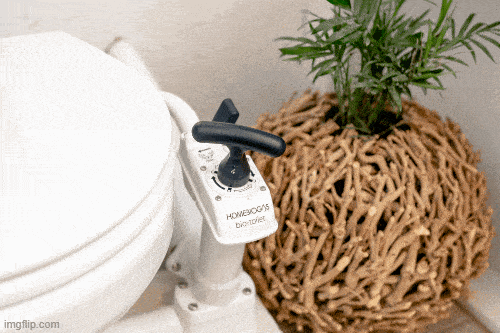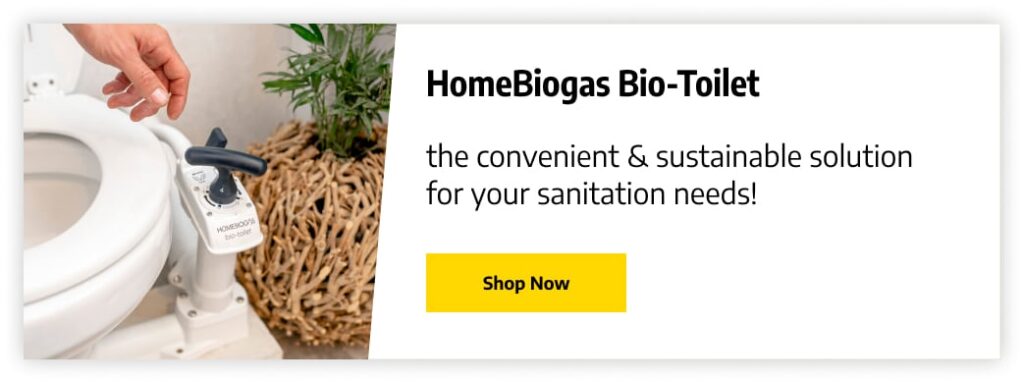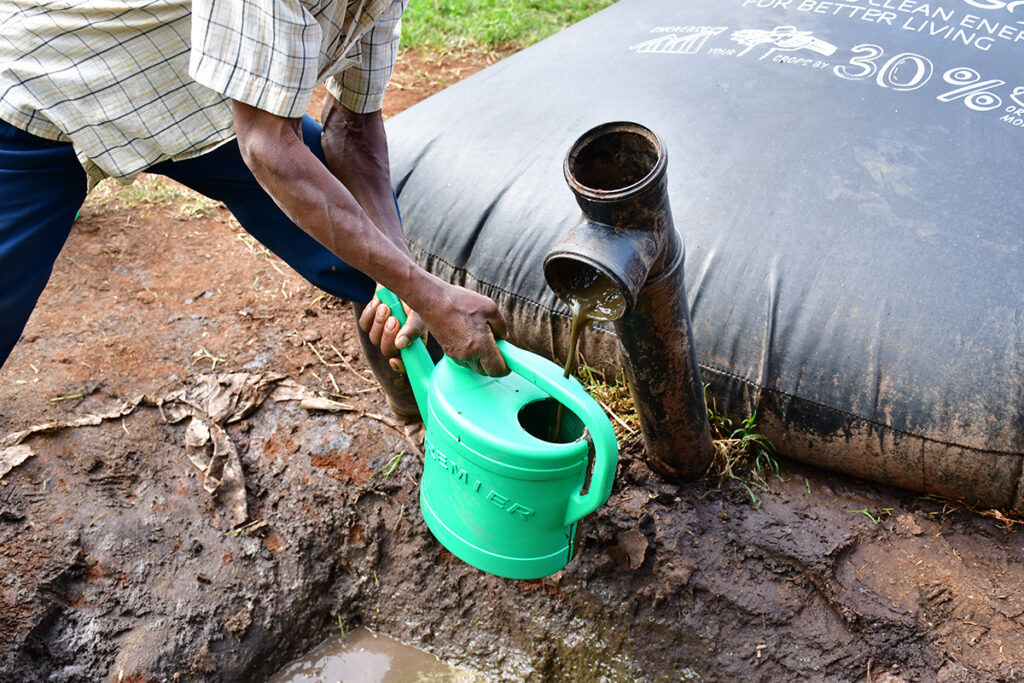
What is a tankless toilet?
Like the name says, tankless toilets are water closets with no water tanks. The best thing about this relatively new system is that it’s an eco-friendly, energy-efficient alternative to traditional toilets. That’s because tankless systems consume less water, positively impacting the environment and your bills.
Traditional water closets are responsible for most of the water consumed inside a household, so by reducing the amount of water used to flush, you can significantly lower your expenses. Let’s look at the numbers: an old toilet can use up to 5 and even 7 gallons of water per flush. Multiply this by the number of times you and people living or visiting your house flush every day, and you got yourself an impressive number.
As you reduce water consumption, you use fewer resources and generate lower amounts of wastewater, with further consequences on energy consumption and environmental impact.
How does a tankless toilet work?
Depending on the system you opt for, tankless toilets can get connected directly to the building’s water line or your house’s water tank if you live off-grid.
The most common residential tankless toilets come with an electric pump that replaces the tank. This way, you can still generate enough pressure to empty the waste and transport it into the drainage system using only the water in the pipes. The tankless toilet also uses a valve to prevent overflow.
Alternatively, you can opt for a system that uses the pressure in the pipes or, sometimes, the tank that supplies water to your house. In this case, you need a 1” tube to ensure the correct functionality of the toilet, so your investment might be significantly higher than what you would typically spend for a water closet.

Is it suitable for a residential home?
Yes, tankless toilets are suitable for residential homes.
However, some models were initially designed for mobile homes or off-grid houses, so you want to make sure you pick a model with features that make it compatible with your house and family needs.
Does it save space and water?
These toilets usually have a modern design and clear lines, making them suitable for small spaces. Some of them can be successfully installed in closets, basements, and even RVs, as the absence of a water tank helps you save significant space.
While not all tankless toilets require the same amount of water to flush correctly, most models reduce water consumption. Some models have a dual flush option to help you control water usage.
Generally speaking, modern toilets can help a family reduce water consumption by anything between 20 and 60% compared to old toilets. It means saving 13,000 gallons of water annually, which translates into around $2,900 saved over the product’s lifetime.
Read the manufacturer’s user manual and technical specifications to see how much water each tankless toilet is expected to consume per flush.
Tank vs. tankless toilets – what are the differences?
At first glance, tank and tankless toilets may seem pretty similar: both systems can be used in almost any type of house and rely on water to eliminate the waste from your bathroom. However, as soon as you start analyzing how the two systems work, you’ll notice significant differences.
1. Design
Tank toilets are more prominent and require extra space for the water tank. If you have a small room, the absence of the tank significantly changes the bathroom layout, and you can take better advantage of the space.
Plus, most tankless toilets come with a modern, minimalist design that gives your entire bathroom a new look. If you want to upgrade the bathroom, this solution will maximize the feeling of space without sacrificing functionality.
2. How it works
The tank toilet is gravity-powered: the water drops from the tank fast enough to trigger the siphon, which automatically pulls the waste and water out of the bowl through the evacuation pipe.
On the other hand, most tankless toilets use pressure to drain wastewater out of the bowl at high speed. If the pipes can’t generate the necessary force to push the waste down the line, the system requires an electric pump or other mechanical assistance to perform the task. Alternative toilets that don’t require pressurized water also exist and are top choices for off-grid properties.
3. Installation
As said before, both tank and tankless toilets can be installed in residential homes. However, installing a tankless toilet may not suit a DIY project. Most manufacturers recommend hiring an expert, especially if you pick a tankless toilet that needs pressurized water to function correctly. That’s because you need to make sure you have suitable pipes to set up the system correctly. Otherwise, you risk damaging the toilet, pipes, or both.
4. Water usage
Depending on the model you pick, the tankless toilet can significantly reduce water consumption compared with the tank systems. In fact, some tankless toilets enable you to control the amount of water you want to consume per flush to optimize consumption and lower your bills. That’s an option tank toilets don’t provide, regardless of the model.
Pros and cons of tankless toilet
Tankless toilets are becoming more and more popular thanks to their minimal design and increased functionality. However, just because most people like something and talk enthusiastically about it online doesn’t mean the same product meets your specific needs.
Let’s go over some pros and cons to help you make a better decision about the proper tankless toilet for your home.
Tankless toilet Pros:
1. Low maintenance. Tankless toilets are generally easy to clean and maintain, mainly because leakages are non-existent.
2. More value for money. These modern systems can have a longer lifespan than a traditional tank toilet. Moreover, you get to save money on water bills if you pick a product that enables you to regulate the amount of water used for flushing.
3. Extra space in your bathroom. Thanks to their reduced size, tankless toilets help you get some of your bathroom space back. Moreover, they can easily fit in small spaces so that you can have a second bathroom in a basement, attic, or other less generous areas of your house.
4. No refills. If there’s no tank, there’s no need to wait between flushes, so you can flush multiple times if needed. This can be particularly useful when cleaning the bathroom or having guests over.
5. Modern design. By shifting to a different style, you get to give your bathroom an instant makeover. Without the bulky water tank, you can redesign the space and make room for other elements.

Tankless toilet Cons:
1. Customization. Many tankless toilets aren’t compatible with old pipes and traditional water supply systems, which means your plumber will have to do some extra work to prepare your bathroom and equip you with the suitable pipes to activate the new toilet.
2. Complexity. As said before, installing a tankless toilet requires professional assistance, and additional work might be necessary. This can include a wide range of tasks, from opening the wall to adjusting and rerouting some of the pipes to even patching the floor under the old toilet if you opt for a wall-mounted bowl.
3. Price. A tankless toilet doesn’t come cheap and, if you need to substitute any pipes to make the system work, costs can quickly add up. Moreover, having to pay a professional to assist with installation will further increase the investment cost.
4. Disruptions. If you opt for a model that incorporates an electric pump, any power outage will impact the toilet’s functionality. Consequently, you might also have to invest in a power generator or batteries if you live in an area where outages are frequent.
Now that you have a better idea about the advantages and disadvantages of shifting to a tankless toilet, it’s time to analyze some of the most popular products on the market to help you understand better how these pros and cons impact your everyday life.
Top 5 Tankless Toilets of 2023
1. HomeBiogas Toilet Kit
The HomeBiogas Bio-Toilet is an atypical tankless toilet, being a more complex and effective system than most of the products available on the market at the moment. This toilet helps you save water while effectively managing human waste by turning it into renewable energy.
Not only do you install a tankless toilet, but you can also use it to produce gas for cooking, with multiple benefits for the environment and your home budget. This way, you get to save money on water and gas bills, manage water consumption, and reduce your carbon footprint.
It’s the right solution for homeowners who want to achieve a self-suficient status, and it’s also suitable for off-grid houses. The toilet doesn’t require pressurized water to function correctly, so the chances you’ll have to change your existing pipes are low.
2. Ove Decors Tuva Bidet Toilet
The Ove Decors Tuva Bidet Toilet is a modern tankless toilet that can automatically flush and deodorize after every usage. It’s a highly-customizable product that brings in a series of tech features, such as a heated seat, sensors for night vision friendly illumination, or bowl self-cleaning.
The product also incorporates a bidet function and a multi-function remote control. The system automatically shifts to eco-mode to save power between uses.
This tankless toilet needs an electrical socket that can bear a load of 1800W and a 9v battery to function during an electricity outage. You’ll need a plumber to help with installation to ensure the provided shut-off valve is installed correctly. The product also comes with an adapter if you wish to connect it to the existing compression valve, but you still need professional assistance to perform the installation.
3. SANIFLO Sanicompact
The SANIFLO Sanicompact is a space-saver. Its dimensions and design make it a top choice for any basement, closets, or attic bathrooms, while also easy to install in mobile or off-grid homes. The product is designed with reduced water consumption in mind, so don’t expect the same experience a tank or more complex tankless toilet would provide.
The electric pump necessary to activate the system is quiet, but sometimes two flushes might be needed to clean the bowl properly. According to users, this tankless toilet requires regular maintenance to keep the water flow functional.
As with most tankless toilets, professional assistance for installing the system is recommended. Ideally, you want to use a licensed contractor to ensure all elements are properly set up.
4. Kohler Veil Smart Tankless Toilet
The Kohler K-5401-0 Veil Skirted is a tankless toilet with clear lines and a minimalist design. It uses pressurized water, has a heated seat, and controls air and water temperature. It provides an excellent user experience thanks to features like integrated cleansing, an automated deodorization system, and a bidet function.
Installation requires a professional plumber, as the system needs a full port valve (usually provided) and at least 50psi of water pressure at the toilet to flush correctly. If the pressure is not high enough, the toilet will still function, but you’re more likely to deal with clogging on larger waste loads.
The toilet needs a 15a electrical circuit with GFCI protection, and the remote panel requires batteries.
5. Dyconn Faucet DF-820ZA Arial Tankless
The Dyconn Faucet DF-820ZA Arial tankless toilet is an all-in-one combo, including a smart toilet and a bidet. The product has a compact design, but it can heat water on demand despite its small dimensions.
It’s connected directly to the water supply line and flushes through a high-pressure system that simultaneously releases water from both sides of the bowl for effective cleaning. The manufacturer guarantees functionality with less than 1.2 gallons of water for each flush.
The product includes a deodorizer, a heated seat, night lights, and anti-microbial protection for the seat.
Why you should consider installing a tankless toilet
As you could read above, substituting your current toilet with a tankless option doesn’t come cheap and isn’t something you can do without assistance. So, why should you give up on the traditional system?
The answer goes beyond design. The tankless toilets provide a better user experience because they’re comfortable, adjustable, easy to clean, and primarily leak-free. Moreover, they don’t take up much space and are water-efficient, which means you spend more upfront, but you also get to save money (and resources) in the long run. It’s an investment just as much as it is an expense.
How to choose the right tankless toilet?
Before changing the toilet for a modern tankless system, here are some things to consider:
Your budget
We made it clear; tankless toilets don’t come cheap. Between the high price and having to perform a series of changes to upgrade your bathroom and make it compatible with this new product, you might end up spending more than expected. You want to evaluate the investment and estimate how much you can save on water bills. Also, do your homework and identify various tankless toilets, as they come in multiple price ranges, and you can easily find alternatives that enable you to do more with less.
Your location
Another essential thing to consider is where you install the tankless toilet is the place where you need to install it. Some models aren’t suitable for off-grid or mobile houses, for example. On the other hand, a too-small toilet initially designed for RVs might not be robust enough to provide comfort and functionality in your primary home.
Another thing to consider about your location is hard water. Suppose you live in an area where water composition can impact the long-term functionality of your tankless toilet. In that case, you might want to opt for a more expensive and resistant system to minimize the hard water impact on the toilet’s components.
Installation requirements
Water pressure and power are the most significant factors that could turn the best tankless toilet solution into a failure. Make sure you read the documentation before buying to understand whether the system you want to buy is compatible with your home. If you don’t understand the requirements, contact a professional plumber to get assistance.
FAQ [frequently asked questions] about Tankless toilets
1. Do all tankless toilets require an electrical socket?
It depends on whether they need pressurized water to function and the additional features. Suppose you want a toilet with a heated seat and a bidet function. In that case, a socket is almost always necessary to provide the power needed to regulate water and air temperature.
2. What is the connection size for a tankless toilet?
Depending on the model, you might need anything between 1/2” to 3/4” shut-off valve for best performances. Usually, these connectors are included in the price, so make sure you pick a product that won’t require additional purchases. Alternatively, you can keep the standard 3/8” compression valve and use an adaptor to set up the system.
3. Is there a weight limit for a tankless toilet?
As a general guideline, a wall-mounted toilet should have a weight limit of a minimum of 500 pounds (226.8 kg) by law. If you pick a floor-mounted toilet, the minimum weight limit is higher. For the exact numbers, read the technical details of each product when doing your research, as they might vary with the manufacturer or the model.
4. Will the toilet paper get flushed?
Yes. Tankless toilets are just as effective as traditional toilets. If you follow the installation instructions and provide the required water pressure, your tankless toilet should be able to flush toilet paper.
5. Does the toilet have to be placed against an inside wall?
Not necessarily. You can install your tankless toilet against any wall, provided you have proper insulation and observe local construction laws and regulations. If you plan significant changes to your bathroom, consider working with a licensed contractor to ensure your toilet is connected correctly to the pipes.
6. Do all tankless toilets have an auto-flush function?
No. Some models have it, but it’s not a standard feature. Note that you can’t turn it off for most tankless toilets that have this function.
How much does a tankless toilet cost?
Depending on the brand and model you pick, the price range can vary from $200 and $300 to over $1000 if you want a product with a bidet function. However, this is just a part of the total investment. Since you need professional assistance, you want to estimate the costs of the intervention before making a buying decision. Last but not least, if you need to adjust pipes and make a hole in your wall, the total costs can quickly go up.
More about Homebiogas tankless toilet
The HomeBiogas Bio-Toilet Kit is different from most tankless toilets available on the market right now since it also enables you to produce biogas from human waste. The system is complex and includes one or two bowls, a digester, special pipes, and a cooking stove so you can revolutionize your entire waste management process.
This tankless toilet uses a natural process called anaerobic digestion to decompose waste and transform it into renewable energy. Therefore, it enables homeowners to live in a self-sustainable manner and gives them more control over their water and energy bills.
It’s primarily suitable for off-grid properties, and it’s easy to install.
Summary
Shifting to a tankless toilet comes with multiple benefits, from reduced water consumption to increased comfort to better usage of your spaces. While it doesn’t come cheap, the change can upgrade your lifestyle and, in some cases, helps you live a sustainable, self-sufficient life.
However, the shift isn’t always a breeze. Tankless toilets come in multiple sizes and shapes, and picking the right product to meet your home’s needs can be challenging. In-depth research or consultancy is necessary to understand which product brings the most value for money, especially if you live off-grid and you want a solution that solves your waste management problems with minimum maintenance required in the long run.








